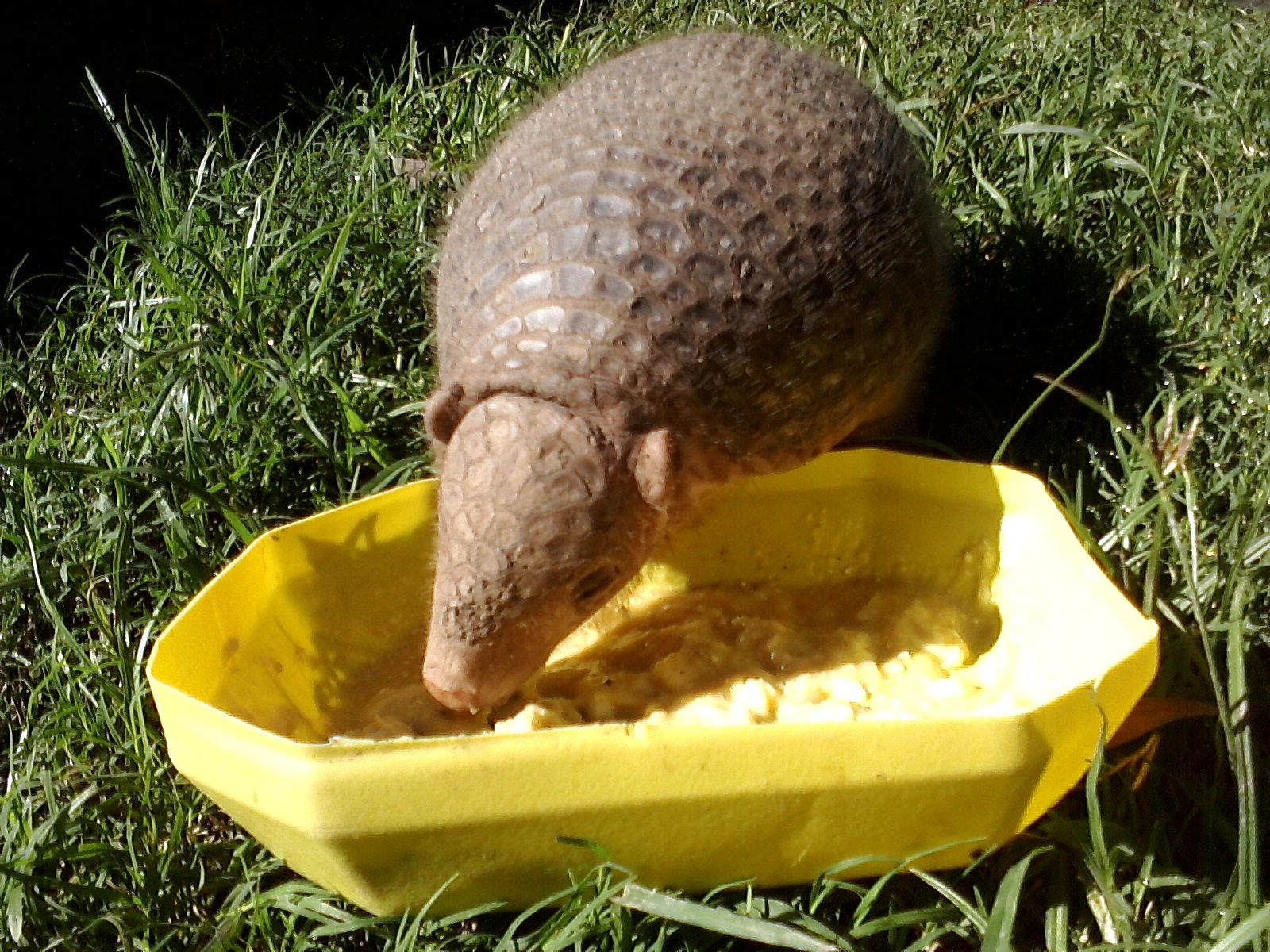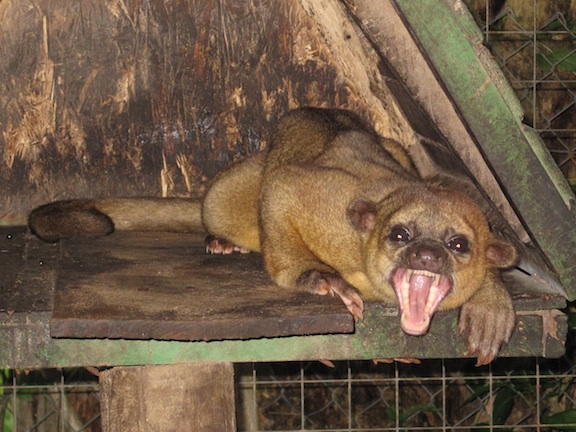|
Lago Do Capanã Grande Extractive Reserve
The Lago do Capanã Grande Extractive Reserve () is an extractive reserve in the state of Amazonas. Location The Lago do Capanã Grande Extractive Reserve is in the municipality of Manicoré, Amazonas. It has an area of . The reserve is bounded by the BR-319 highway along the northwest border. To the southwest the reserve adjoins the Nascentes do Lago Jari National Park. The southeast boundary of the reserve is close to the Madeira River and is crossed by Lago do Capanã (Capanã Lake), after which the reserve is named. To the northeast it adjoins the Rio Amapá Sustainable Development Reserve. The terrain is flat or slightly undulating. The region is mainly drained by the Madeira River. The main streams within the reserve are the Capanã igarapé and the Amapá River, a tributary of the Matupiri River. There are many other smaller streams or bayous, some completely dry in the dry season. The reserve contains the Barbaço and Matupá lakes. Environment Temperatures range f ... [...More Info...] [...Related Items...] OR: [Wikipedia] [Google] [Baidu] |
Manicoré
Manicoré is a municipality located in the south-east of the Brazilian state of Amazonas. History Manicoré's origins date back to 1637, with the expedition of Pedro Teixeira, a Portuguese explorer and military man. The authorities of Grão-Pará sent an escort to the Madeira River in 1716, commanded by João de Barros e Guerra, an experienced captain. In 1797, the village of Crato was founded, under orders from the Governor of Grão-Pará, with a view to facilitating commercial transactions between Pará, Mato Grosso and Goiás. The village was transferred to a site between the Baetas and Arraias rivers, in 1802. On July 4, 1858, through Law no. 96, the parish of São João Batista do Crato is created. Ten years later, on July 6, 1868, the parish seat was transferred to the town of Manicoré, under Law no. 177, becoming known as Nossa Senhora das Dores de Manicoré. Only on July 4, 1877, Manicoré was elevated to the category of Village and the Judiciary Term was created, by ... [...More Info...] [...Related Items...] OR: [Wikipedia] [Google] [Baidu] |
Giant Otter
The giant otter or giant river otter (''Pteronura brasiliensis'') is a South American carnivorous mammal. It is the longest member of the weasel family, Mustelidae, a globally successful group of predators, reaching up to . Atypical of mustelids, the giant otter is a social species, with family groups typically supporting three to eight members. The groups are centered on a dominant breeding pair and are extremely cohesive and cooperative. Although generally peaceful, the species is territorial, and aggression has been observed between groups. The giant otter is diurnal, being active exclusively during daylight hours. It is the noisiest otter species, and distinct vocalizations have been documented that indicate alarm, aggression, and reassurance. The giant otter ranges across north-central South America; it lives mostly in and along the Amazon River and in the Pantanal. Its distribution has been greatly reduced and is now discontinuous. Decades of poaching for its velvety ... [...More Info...] [...Related Items...] OR: [Wikipedia] [Google] [Baidu] |
Abufari Biological Reserve
Abufari Biological Reserve () is a biological reserve in the state of Amazonas, Brazil. It is mostly lowland tropical rainforest, with very diverse flora and fauna. Location The Abufari Biological Reserve is in the Amazon biome in the municipality of Tapauá, Amazonas. It was created on 20 September 1982 and has an area of . It is administered by the Chico Mendes Institute for Biodiversity Conservation. To the northeast the reserve adjoins the Piagaçu-Purus Sustainable Development Reserve, established in 2003. The terrain is mostly lowland, with altitude from . The Purus River and its tributaries run through the reserve, which also includes a system of lagoons. Environment Average annual rainfall is . Temperatures vary from , with an average of . The reserve has one of the largest nesting areas for freshwater Amazon turtles, where more than 200,000 freshwater turtles are born each year. Species include the endangered Arrau turtle (Podocnemis expansa), the six-tubercled Ama ... [...More Info...] [...Related Items...] OR: [Wikipedia] [Google] [Baidu] |
PRONAF
The agricultural sector in Brazil is historically one of the principal bases of Economy of Brazil, Brazil's economy. In 2024, Brazil was the second-biggest grain exporter in the world, with 19% of the international market share, and the fourth overall grain producer. Brazil is also the world's largest exporter of many popular agriculture commodities like coffee, soybeans, cotton, honey, organic honey, beef, poultry, sugarcane, cane sugar, Açaí palm, açai berry, orange juice, yerba mate, cellulose, tobacco, and the second biggest exporter of maize, corn, pork, and ethanol. The country also has a significant presence as producer and exporter of rice, wheat, eggs as food, eggs, refined sugar, cocoa bean, cocoa, beans, Nut (fruit), nuts, cassava, sisal, sisal fiber, and diverse fruits and vegetables. The success of agriculture during the Estado Novo (Brazil), Estado Novo (New State), with Getúlio Vargas, led to the expression, "Brazil, breadbasket of the world". The southern o ... [...More Info...] [...Related Items...] OR: [Wikipedia] [Google] [Baidu] |
IUCN Protected Area Categories
IUCN protected area categories, or IUCN protected area management categories, are categories used to classify protected areas in a system developed by the International Union for Conservation of Nature (IUCN). The enlisting of such areas is part of a strategy being used toward the conservation of the world's natural environment and biodiversity. The International Union for Conservation of Nature, IUCN has developed the protected area management categories system to define, record and classify the wide variety of specific aims and concerns when categorising protected areas and their objectives. Further supplementary guidelines have been developed specific to marine protected areas (MPAs). This categorisation method is recognised on a global scale by national governments and international bodies such as the United Nations and the Convention on Biological Diversity. Categories Category Ia – strict nature reserve A strict nature reserve (IUCN Category Ia) is an area which is ... [...More Info...] [...Related Items...] OR: [Wikipedia] [Google] [Baidu] |
Chico Mendes Institute For Biodiversity Conservation
The Chico Mendes Institute for Biodiversity Conservation ( Portuguese: ''Instituto Chico Mendes de Conservação da Biodiversidade'', ICMBio) is a government agency under the administration of the Brazilian Ministry of the Environment. It is named after the environmental activist Chico Mendes. Its function is to protect, manage, and administrate protected areas within the country's territory. ICMBio is headquartered in Brasília Brasília ( ; ) is the capital city, capital of Brazil and Federal District (Brazil), Federal District. Located in the Brazilian highlands in the country's Central-West Region, Brazil, Central-West region, it was founded by President Juscelino .... References Nature conservation in Brazil Executive branch of Brazil Research institutes in Brazil Biodiversity databases Government agencies established in 2007 Environmental organizations established in 2007 2007 establishments in Brazil {{brazil-gov-stub, date=March 2014 ... [...More Info...] [...Related Items...] OR: [Wikipedia] [Google] [Baidu] |
Three-toed Sloth
The three-toed or three-fingered sloths are arboreal neotropical mammals. They are the only members of the genus ''Bradypus'' (meaning "slow-footed") and the family Bradypodidae. The five living species of three-toed sloths are the brown-throated sloth, the maned sloth, the pale-throated sloth, the southern maned sloth, and the pygmy three-toed sloth. In complete contrast to past morphological studies, which tended to place ''Bradypus'' as the sister group to all other folivorans, molecular studies place them nested within the sloth superfamily Megatherioidea, making them the only surviving members of that radiation. Extant species Evolution A study of mitochondrial cytochrome b and 16S rRNA sequences suggests that '' B. torquatus'' diverged from '' B. variegatus'' and '' B. tridactylus'' about 12 million years ago, while the latter two split 5 to 6 million years ago. The diversification of ''B. variegatus'' lineages was estimated to have started 4 to 5 million years a ... [...More Info...] [...Related Items...] OR: [Wikipedia] [Google] [Baidu] |
Giant Anteater
The giant anteater (''Myrmecophaga tridactyla'') is an Insectivore, insectivorous mammal native to Central America, Central and South America. It is the largest of the four living species of anteaters, which are classified with sloths in the order (biology), order Pilosa. The only extant member of the genus ''Myrmecophaga'', the giant anteater is mostly terrestrial, in contrast to other living anteaters and sloths, which are arboreal or semiarboreal. The species is in length, with weights of for males and for females. It is recognizable by its elongated snout, bushy tail, long foreclaws, and distinctively colored fur. The giant anteater is found in multiple habitats, including grassland and rainforest. It forages in open areas and rests in more forested habitats. It feeds primarily on ants and termites, using its foreclaws to dig them up and its long, sticky tongue to collect them. Though giant anteaters live in overlapping home ranges, they are mostly solitary except during ... [...More Info...] [...Related Items...] OR: [Wikipedia] [Google] [Baidu] |
Cabassous
''Cabassous'' is a genus of South and Central American armadillos. The name is the Latinised form of the Carib language, Kalini word for "armadillo". Cladogram of living ''Cabassous'' The genus contains the following four species: References Armadillos Mammal genera Taxonomy articles created by Polbot {{mammal-stub ... [...More Info...] [...Related Items...] OR: [Wikipedia] [Google] [Baidu] |
Black-tufted Marmoset
The black-tufted marmoset (''Callithrix penicillata'') is a species of New World monkey that lives primarily in the Neotropical gallery forests of the Brazilian Central Plateau. It ranges from Bahia to Paraná, and as far inland as Goiás, between 14°S and 25°S, and can commonly be seen in the Rio de Janeiro city where it was introduced. This marmoset typically resides in rainforests, living an arboreal life high in the trees, below the canopy. They are only rarely spotted near the ground. Physical description The black-tufted marmoset is characterized by black tufts of hair around their ears. It typically has some sparse white hairs on its face. It usually has a brown or black head and its limbs and upper body are gray, as well as its abdomen, while its rump and underside are usually black. Its tail is ringed with black and white and is not prehensive, instead used for balance. It does not have an opposable thumb and its nails tend to have a claw-like appearance. The black-tu ... [...More Info...] [...Related Items...] OR: [Wikipedia] [Google] [Baidu] |
Kinkajou
The kinkajou ( /ˈkɪŋkədʒuː/ ''KING-kə-joo''; ''Potos flavus'') is a tropical rainforest mammal of the family Procyonidae related to olingos, coatis, raccoons, and the ringtail and cacomistle. It is the only member of the genus ''Potos'' and is also known as the "honey bear" (a name that it shares with the unrelated sun bear). Though kinkajous are arboreal, they are not closely related to any other tree-dwelling mammal group (primates, some mustelids, etc.). Native to Mexico, Central and South America, this mostly frugivorous mammal is seldom seen by people because of its strict nocturnal habits. However, it is hunted for the pet trade, its skin (to make wallets and horse saddles), and its meat. The species has been included in Appendix III of CITES by Honduras, which means that exports from Honduras require an export permit, and exports from other countries require a certificate of origin or of re-export. They may live up to 40 years in captivity. Etymology The ... [...More Info...] [...Related Items...] OR: [Wikipedia] [Google] [Baidu] |




